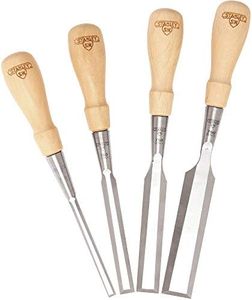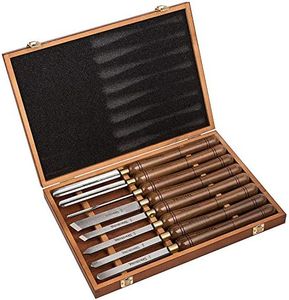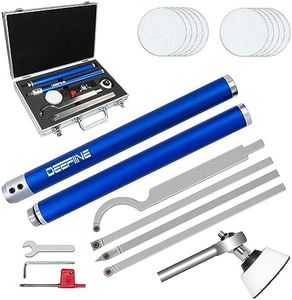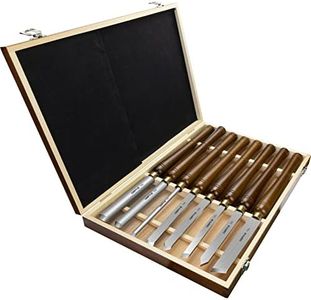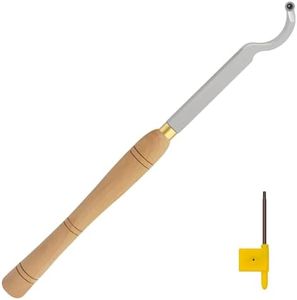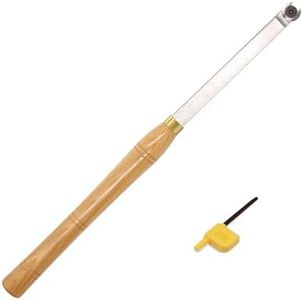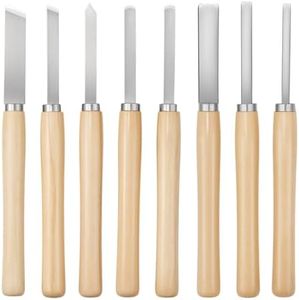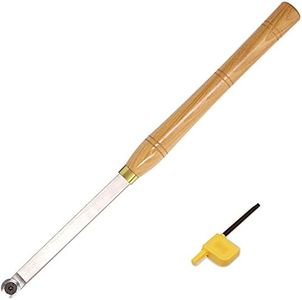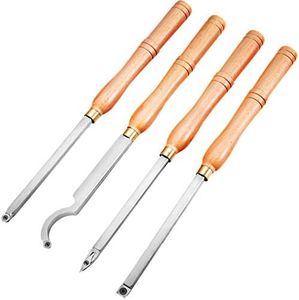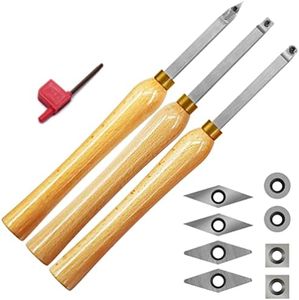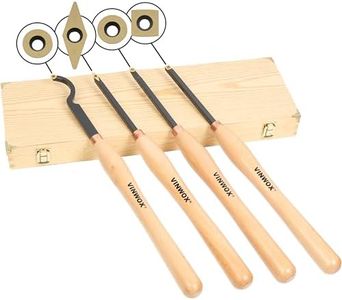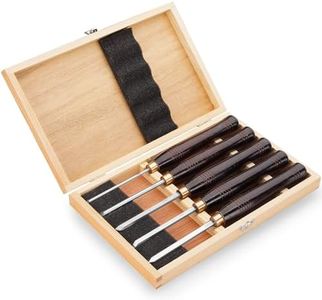We Use CookiesWe use cookies to enhance the security, performance,
functionality and for analytical and promotional activities. By continuing to browse this site you
are agreeing to our privacy policy
10 Best Lathe Chisels
From leading brands and best sellers available on the web.By clicking on a link to a third party's website, log data is shared with that third party.
Buying Guide for the Best Lathe Chisels
When shopping for lathe chisels, it's important to choose tools that match both your current skill level and the types of woodturning projects you're interested in. Lathe chisels come in various shapes and sizes, each suited for specific tasks such as roughing out a shape, detailing, or hollowing. Understanding the key features of lathe chisels helps you select a set that will be comfortable to use, stay sharp longer, and give you the best results for your projects. Always consider how these specs relate to the work you'll do most often, so your chisels support your creativity and efficiency at the lathe.Chisel MaterialThe material of the chisel refers to the type of steel used for the blade. Most commonly, you’ll find high-carbon steel or high-speed steel (HSS). Chisel material is crucial because it determines how well the edge holds its sharpness and how often you'll need to sharpen it. HSS stays sharp significantly longer and resists heat better, making it ideal for woodturning where friction is common. High-carbon steel is easier to sharpen but loses its edge faster. If you turn a lot or work with hard woods, HSS is generally preferred, while occasional or casual users might be fine with high-carbon steel. Think about how much you use your lathe and how often you want to sharpen your tools to decide which is best for you.
Handle Material & LengthHandles on lathe chisels are usually made from wood or composite materials and come in different lengths. The handle’s job is to provide grip and absorb vibrations, making your turning more comfortable and controlled. Longer handles give you more leverage and control, useful for larger projects and deeper cuts; shorter handles can be less tiring for detailed, smaller work. If you often turn large bowls or spindles, look for long, sturdy handles. For small, precise work like pens or small ornaments, shorter handles may be more maneuverable. Consider the size of your hands and your comfort when choosing handle length and material.
Chisel Shape/ProfileLathe chisels come in various shapes, such as gouges, skews, parting tools, and scrapers. Each shape performs a specific function in the turning process—for example, roughing gouges remove material quickly, spindle gouges create detailed shapes, and skews are ideal for smooth cuts. The right profile depends on what you’ll be making. Beginners often benefit from a basic set containing all major profiles, allowing for versatility. If you’re focused on one specific type of turning, like bowl making, prioritize the shapes used most for that task. Understanding the types of cuts and finishes you want helps guide your choice of chisel shapes.
Size (Blade Width and Length)The size of a lathe chisel includes both the width of the blade and its overall length. Wider blades provide more stability and strength, vital for heavy-duty tasks or roughing out large pieces. Narrower blades offer precision and are ideal for delicate detailing or fine work. Blade length impacts reach and leverage; longer blades are better for deep cuts, while shorter ones are easier to control for intricate work. Choose wider, longer chisels for large projects, and slimmer, shorter ones for smaller, more detailed items.
Set or IndividualChisels are available for purchase as complete sets or individually. Sets usually cover the basic tools you’ll need for a wide range of tasks and are often a good option for those starting out or looking to build a versatile toolkit. Buying individual chisels lets you customize your collection with higher quality or specific profiles as needed. If you're beginning or want a good all-rounder selection, a set may be practical. If you already know which chisels you use frequently, or require specialty tools, selecting individual chisels can be more efficient.
